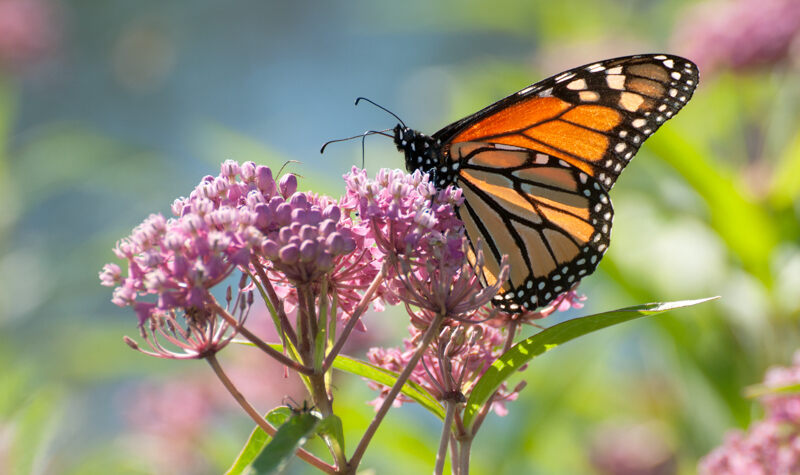Friend or Foe?
By: Rachel Ndeto
Assistant Director of Education at Woodford Cedar Run Wildlife Refuge
Spring is here! Some of my favorite signs of spring are birds chirping, flowers blooming and insects starting to emerge. Not everyone seems to agree with that last one, but I’ve got a few common insects here that you might start to like if you get to know them.
Ground bees are one of the first signs of spring at Cedar Run, often seen as soon as it gets a little warm. They are solitary bees and each female will dig a nest for her own brood, but they do like to have neighbors. They prefer sandy, dry soil, which the Pinelands have plenty of. You’ll often see them flying low to the ground as the males look for mates, and the females look for bits of leaves and chewed flower petals to line their nests, and pollen and nectar for the young to eat. Solitary bees are not aggressive and will rarely sting. The males might be considered more aggressive, however, they have no stinger so they are harmless. In two to four weeks, the bees finish building their nests and laying eggs, after which the adults will die. The eggs and larva will remain underground until next spring, starting the cycle over again.

Life underground is not easy, and the little bee larvae have a number of predators. One you might see during the summer is the velvet ant, so named because the females look like bright red fuzzy ants. They are actually a kind of wasp and can pack a very powerful sting. The females have no wings and can’t fly, so they run along searching for ground bee nests. She will lay her own eggs in the same nest, so her larva can parasitize the ground bee larvae and pupae. Velvet ants in this area are bright red and black as a warning to other animals to stay away. Please don’t try to pick up a velvet ant! They are beautiful to watch, but please observe with caution. Although, if you’re lucky enough to see one with wings, that’s a male velvet ant and it also doesn’t have a stinger!

Bright colors are a theme for several other bugs you see in the spring and summer. Most insects that live and feed on milkweed plants are bright orange, including milkweed bugs, milkweed beetles, and monarch butterflies. All of these bugs are harmless to people, but they taste bad to animals that might try to eat them. Having the same coloring deters predators from eating anything that looks similar because they all taste bad. All of these insects often live together on the same milkweed plant, with milkweed beetles feeding next to monarch caterpillars. 
Caterpillars are one of the last insects you’ll see during the summer and early autumn, and sometimes are a cause for concern. Most caterpillars are harmless to humans, but there are a few that may sting or irritate your skin. In general, fuzzy or spiny caterpillars like the tussock moth, buck moth, and flannel moth caterpillars should be observed but not handled. Sometimes their fuzz hides sharper spines that may have an irritant inside, or the fuzz itself is a delicate structure that lodges easily in sensitive skin, both of which are supposed to discourage predators from eating them. The adults of many moth species in the area are very drab compared to the caterpillars, so I always view it as a treat to see the variation in the young insects – as long as you are viewing carefully and not attempting to pick them up.

All of these bugs are fascinating to watch and are a thrill to see each year. They are all a sign of a healthy ecosystem and with a little consideration, you can safely watch for all these beautiful insects. Happy bug hunting!